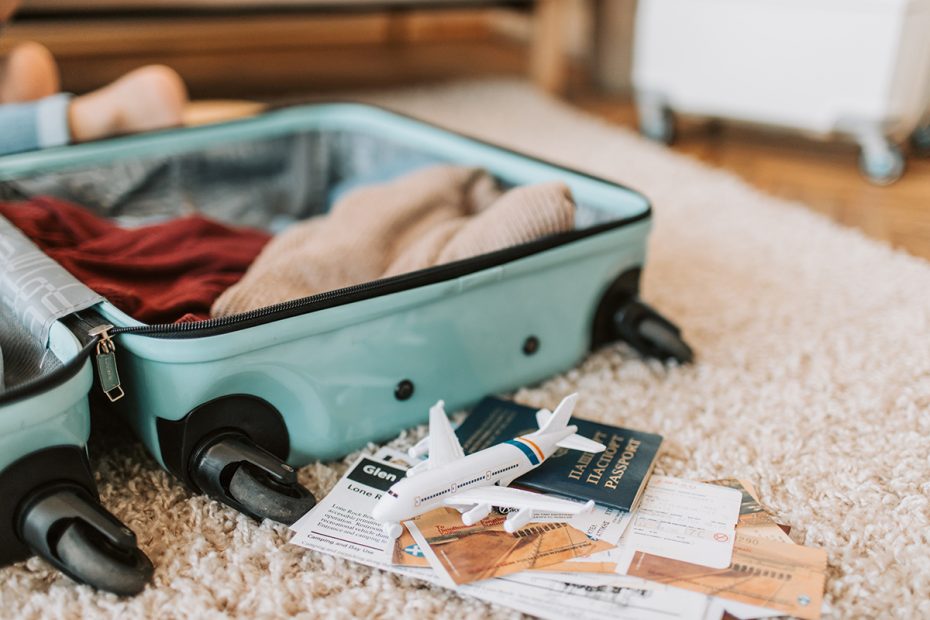
Planning a trip is exciting to think about. However, air travel may affect your lymphedema or trigger the onset. Not everyone is affected by air travel and there is research* to show this. In clinical practice we have seen enough patients who are affected so it’s worth noting and taking simple precautions.
When we fly our tissues are affected by the cabin pressure. Our tissue pressure is normally a negative value; it has a suction effect as it pulls inward to keep our tissue tight against blood and lymph vessels. When tissue pressure weakens, it can cause more fluid to enter the tissues from the blood vessels than normal, and at the same time is weak to push fluid into the lymphatics and shows up as swelling. When we fly, the altitude changes our tissue pressure to move toward the direction of positive. Tissue pressure becomes weaker and may result in more fluid accumulating in the tissues because the force to keep fluid in the blood vessels has weakened.
Compression garments act to replace lost or weakened tissue pressure. If you have lymphedema it would be advised to wear your compression garment before, during and after a flight. Take it off at bedtime as usual. For those who don’t have lymphedema but are at risk for developing lymphedema it might be a good idea to wear compression during the flight or at least to have it available in your carry-on luggage.
Some questions to ask yourself:
Do you have a history of legs that swell on flight?
If so, your tissue pressure in general might be weaker than the average person and having compression on or readily available would be a good idea.
Are you able to move around or stretch during the flight?
Movement will help move fluid out of the tissues. Sitting still for long periods of time, even on the ground, will allow fluid to accumulate in the tissues. Choosing an aisle seat will increase your opportunities to move around.
Are you able to lie flat or reclined during your flight?
Being in a reclined or flat position will help prevent fluid from building up in the legs. Also elevating the arms will help fluid flow more efficiently.
Are you wearing or have the correct compression for you?
Not all compression is created equally. Check with your lymphedema therapist to find out if your compression is too strong, not strong enough, proper coverage, proper design etc. These factors are important at all times because an improperly fitted garment may trigger lymphedema on its own. A sign of a properly fitted garment will be that it is comfortable to wear.
Are you able to stay hydrated and bring your own snacks?
Drinking lots of water will help prevent swelling. If you don’t get enough fluids your body will want to hang on more fluid resulting in swelling. The more water you drink will get you moving up and down to the washroom as well. Packing your own snacks will help avoid salty foods, which in addition to caffeine and alcohol, will contribute to build up of fluids in the tissues.
Are you able to check your baggage?
Pack a light carry-on, check or ask for assistance with your baggage and avoid lifting a heavy suitcase. Heavy lifting can be a trigger for lymphedema or exacerbations of existing lymphedema.
Newer planes are better designed to maintain normal air pressure. This may mean that compression garments should not be necessary. Check with your airline to find out if your plane has this feature.
Getting lymph drainage before and after your flight may help in dealing with any extra fluid that could accumulate in the tissues. Book an appointment with our registered massage therapists.
Denise Drisdelle is a registered massage therapist and co-founder of FLOW Lymphatic Health Services.
Sources:
*Original articles, Volume 11, Issue 1, p66-71, February 01, 2002. Compression prophylaxis may increase the potential for flight-associated lymphoedema after breast cancer treatment. P.H. Graham DOI:https://doi.org/10.1054/brst.2001.0370